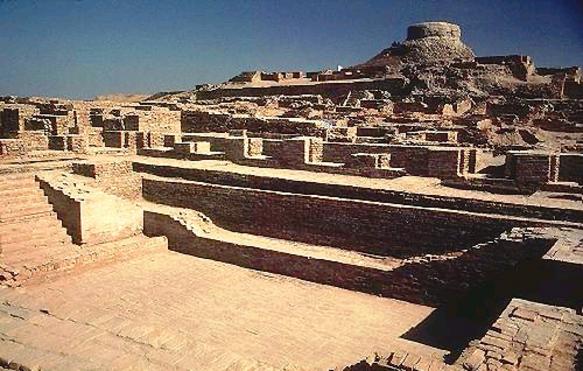River valley civilizations revolve around the rivers that surround them. The Indus Valley Civilization’s (IVC) rivers flooded reliably twice a year, creating fertile crops that resulted in the most available calories per acre of anywhere on the planet¹. They were located in one of the best places to have a civilization in the world.
The IVC was the largest of discovered ancient civilizations. Archeologists have found 1500+ sites. Everything historians know about the IVC is from archaeologists. The IVC did have ancient writing systems but nothing historians have been able to interpret. There was amazing cities in the IVC, including two well known ones named Harappa and Mohenjo. These cities often had dense, multi-story homes along perpendicular streets with real zoning¹. Most homes were connected to a centralized drainage system that would have been the envy of 18th century European cities. One of the most impressive conclusion archaeologists have come to is that the IVC traded outside of its own civilization. Archaeologists know this because the IVC produced beautiful, intricate seals they used as identification markers on goods. How did these seals help historians discover they traded? Instead of being found in the Indus Valley, they were found in Mesopotamia¹.
 Perhaps the most interesting discovery (or lack of) that archaeologists have made in studying the IVC is a distinct lack of warfare and almost no weapons. At this point, considering everything that has been found at IVC, historians believed they were a largely peaceful civilization. This contributes to a popular theory explaining why the IVC declined until it faded around 1750 BCE. Having no weapons is a terrible military strategy and it is likely they were conquered. Others believe an environmental disaster or earthquake altered their water supply and irrigation systems¹.
Perhaps the most interesting discovery (or lack of) that archaeologists have made in studying the IVC is a distinct lack of warfare and almost no weapons. At this point, considering everything that has been found at IVC, historians believed they were a largely peaceful civilization. This contributes to a popular theory explaining why the IVC declined until it faded around 1750 BCE. Having no weapons is a terrible military strategy and it is likely they were conquered. Others believe an environmental disaster or earthquake altered their water supply and irrigation systems¹.
The Great Bath of Mohenjo-daro
1. Indus Valley Civilization: Crash Course World History. Retrieved from http://www.youtube.com/watch?v=n7ndRwqJYDM
Image Credit: Wikimedia Commons
© BrainMass Inc. brainmass.com June 30, 2024, 7:28 am ad1c9bdddf